Minke whales (it rhymes with stinky) are known for their... stinky breath. So much so, the minke smell is commonly used as a scouting tool for many whale watching trips.
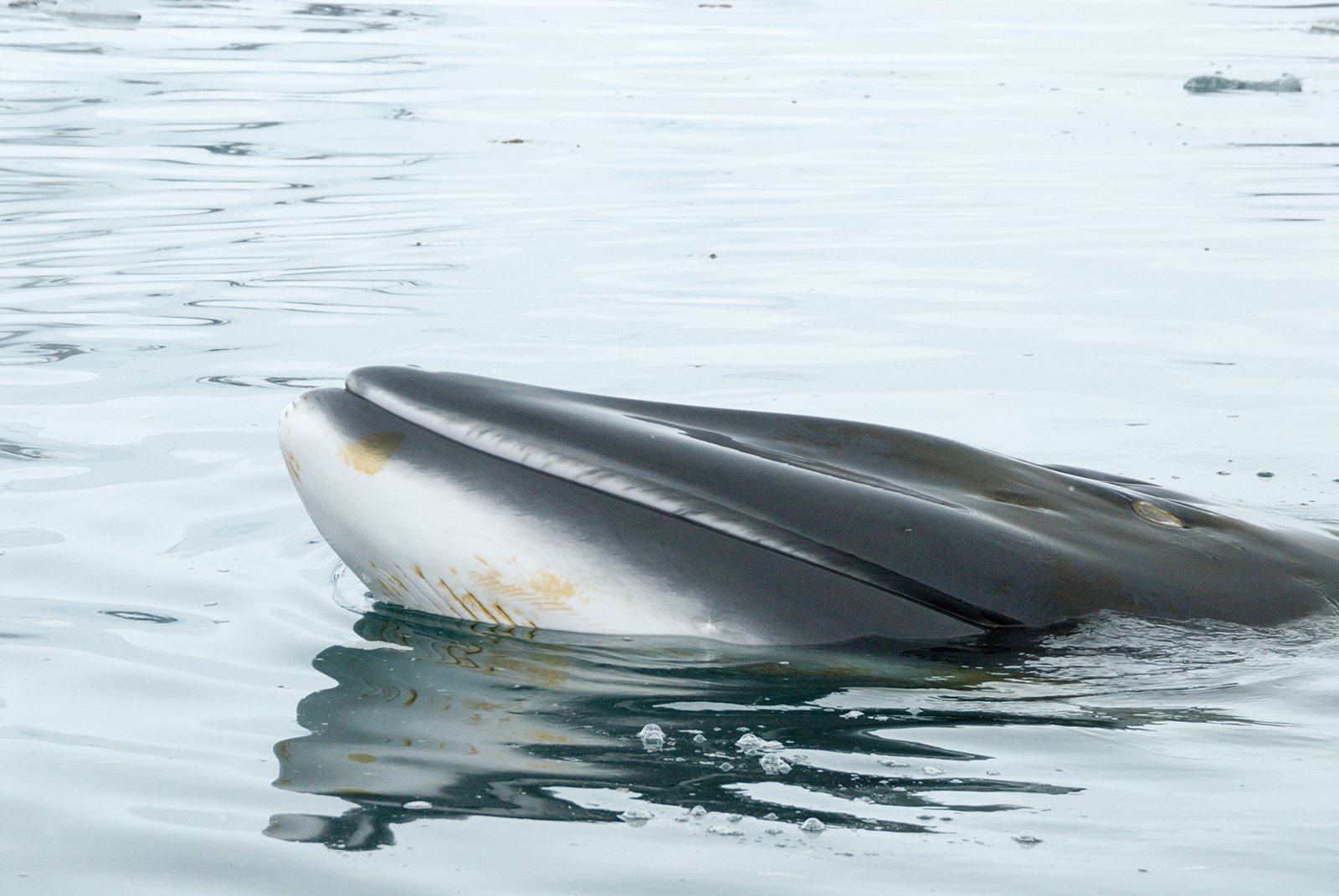
Regardless of its breath, the minke whale actually earned their name from Meincke, an amateur whale spotter, who mistakenly took a minke whale for a blue whale.
Keep reading to learn more minke whale facts such as their size, population status, and how long they live.
Regional Habitat: Oceans worldwide but primarily in the Atlantic, Pacific and Antarctic Oceans in the polar regions of the Arctic and Antarctic.
Name: Minke whale (Balaenoptera acutorostrata)
Length: Up to 35 feet (10m)
Weight: Up to 20,000 pounds (9,071kg)
Conservation Status: The conservation status of the common minke whale is Least Concern, whereas the conservation status of the Antarctic minke whale is Near Threatened. This is due to the larger size of the Antarctic minke whale that made it a more desirable target for commercial whalers.
Diet: Minke whales enjoy a diet that includes large fish, as well as crustaceans and plankton. Minke whales eat smaller fish as well, most often those which are found in schools including cod, anchovies, salmon, and mackerel.
Appearance: The minke whale's scientific name Balaenoptera acutorostrata means winged whale, sharp snout which encapsulates the appearance of the minke whale. Compared to other whales, minke whales are known for their relatively small size as well as black/purple/dark gray slender bodies. Their dorsal fin is sickle-shaped and tall. Minke whales have a white belly/underside, and calves are usually darker than adults.
Antarctic minke whales are recognizable for their solid gray pectoral flippers with a white edge.
Where to see minke whales: You can see minke whales in oceans throughout the world, from the Great Barrier Reef to Greenland Whale Watching on expeditions such as Essential Greenland: Southern Coasts and Disko Bay or Greenland Adventure: Explore by Sea, Land, and Air.
Antarctic polar expeditions opportunities to see the Antarctic minke whale include Crossing the Circle: Southern Expedition where you can take a Zodiac cruise that is a wonderful chance to take incredible photos.
Or try the 11-day Antarctic adventure Antarctic Express: Crossing the Circle that starts in Patagonia and takes you through the South Shetlands Islands and across the Antarctic Circle.
Minke whale size
Minke whales are one of the smallest baleen whales that lives in North American waters, yet they are still comparable to the size of a double-decker bus. They are the smaller cousin of the blue whale.
Minke whales are the smallest whale in the whale rorqual family (that also includes the fin whale, humpback whale, and blue whale) and there are two distinct species of minke whales: the common minke whale (or northern minke whale) and the the Antarctic minke whale (southern minke whale).
There is also a subspecies of smaller minke whales, known as dwarf minke whales.
While they may be small, minke whales are fast and can reach speeds over 25mph when being chased by predators such as killer whales.
Are minke whales an endangered species?
Minke whales have the largest population of baleen whales.
When commercial whalers hunted whale populations for their blubber and oil, minke whales were often spared because their smaller size made them less economically valuable. This makes the minke population healthy compared to that of other whales.
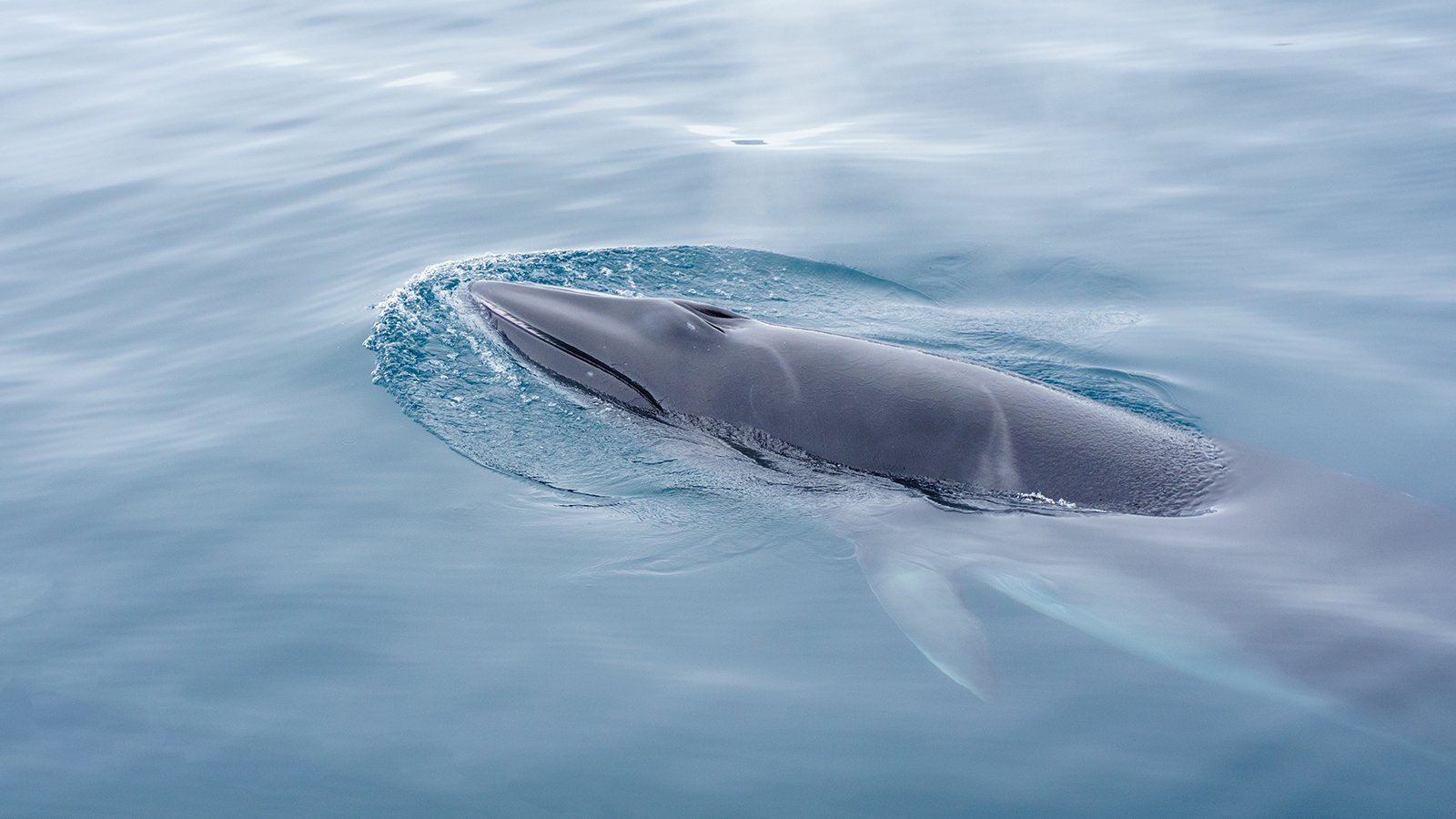
Yet, although the whaling industry has now abated, minke whales are one of the species still impacted by the unsustainable hunting practices of the whaling industry. Estimates suggest about 5,000 minke whales have been killed in the past decade, causing southern minke whales to be listed as "Near Threatened".
The minke whale population worldwide is estimated at 209,800.
Other than whaling, minke whales are also face danger from their largest predator, the killer whale, vessel strikes, pollution and its impacts on their habitats, as well as fishing gear that can cause enough injury to kill minke whales.
Do minke whales have teeth?
Unlike their toothed cousins, such killer whales, minke whales are toothless.
Antarctic minke whales have 200 to 300 baleen plates (plates on each side of the roof of a whale's mouth that works to filter krill from the seawater they ingest). Antarctic minke whales also have 22 to 38 abdominal pleats along their throat that helps the whale expand its throat size during feeding to allow the whale to take in lots of water and fish.
Like other marine mammals, minke whales require oxygen to breathe so they must breach to catch their breath. Commonly when at the surface, they'll take three deep breaths before diving again.
While hunting for food, minke whales hold their breath for 15 minutes at a time, but this can increase to up to 20 minutes when being chased by a predator.
How big are minke whales?
The minke whale is one of the smallest baleen whale species, but their size can differ across their species complex.
Unlike many marine mammals, female minke whales are usually slightly larger than male minke whales.
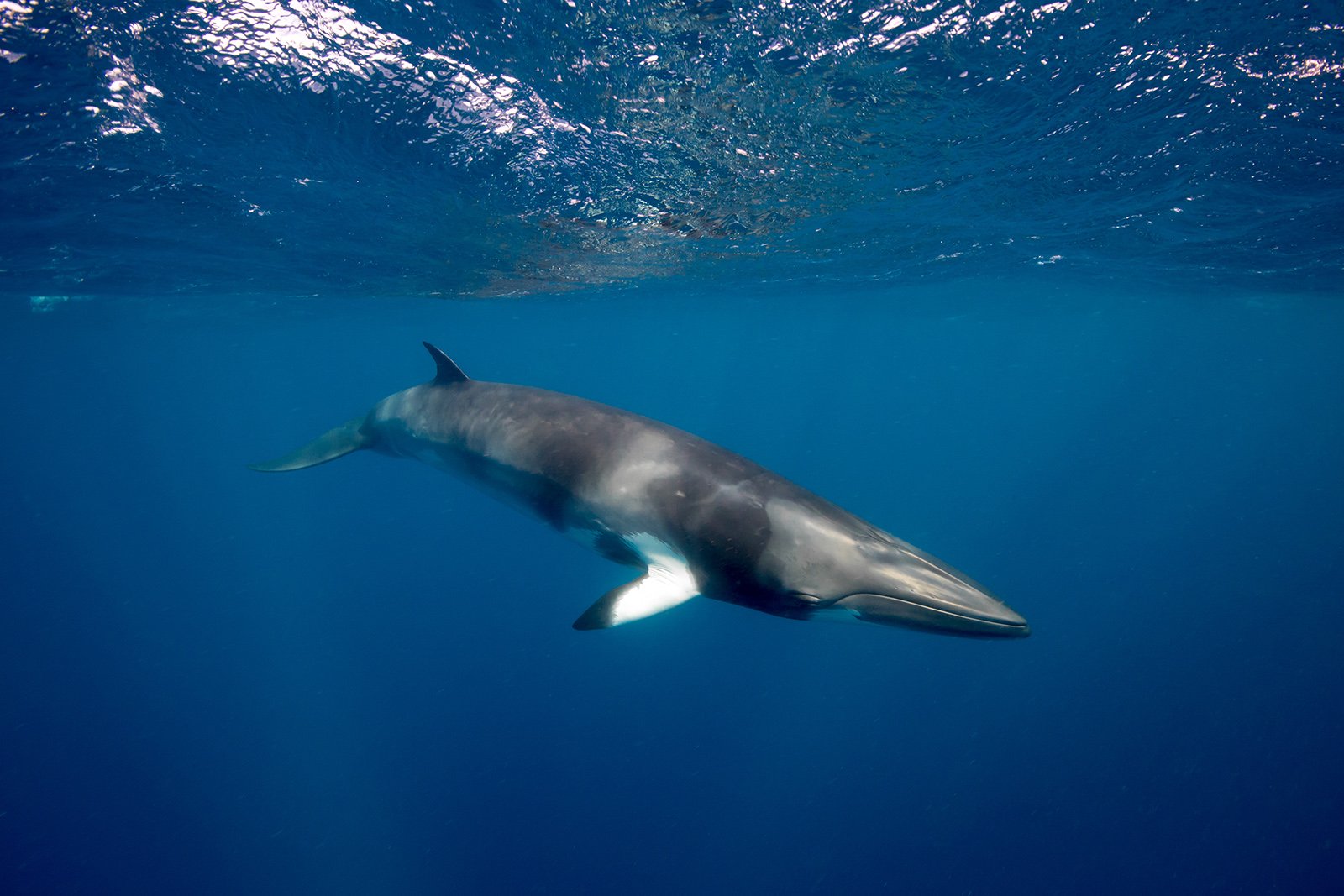
The subspecies of the dwarf minke whale are significantly smaller than the northern minke whale or southern minke whale, weighing up to 14,000 pounds (6,350kg) and usually reaching lengths of about 26 feet (7m).
How long do minke whales live?
Minke whales live in the wild for 30 to 50 years, yet some minke whales can live longer.
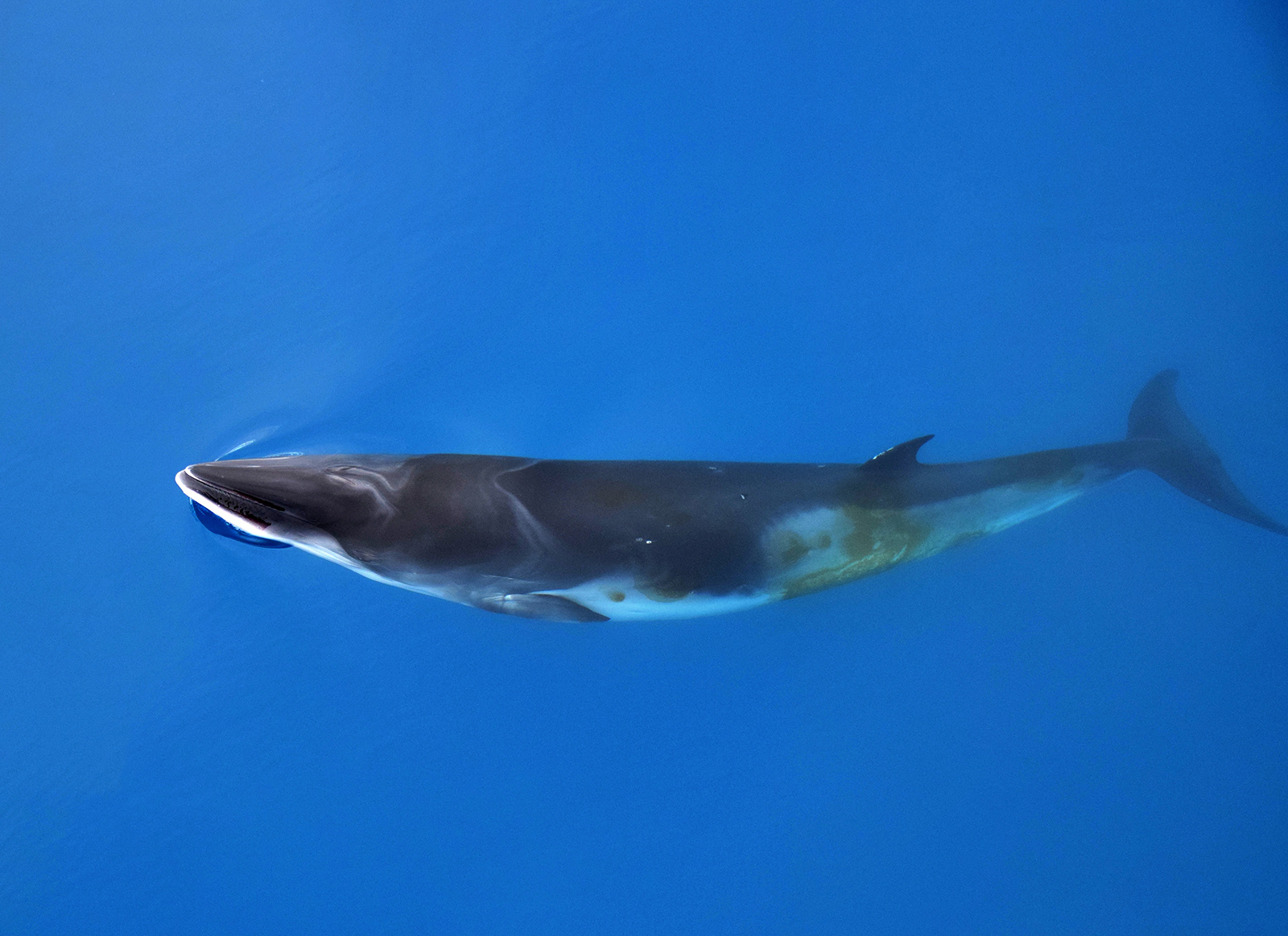
Minke whales are considered sexually mature between the ages of 3 to 8 years. Mating typically occurs during the winter months. Pregnant females give birth after a gestation period of 10-11 months, and wean their calves from nursing after 4 to 6 months.
At birth, minke whale calves are 8 - 11.5 feet (2-3m) long and weigh between 700 - 1000 pounds (317 - 453kg).
Where are minke whales found?
Minke whales are found globally in oceans worldwide.
Older minke whales typically live in the colder waters of the polar region, while a younger minke whale will spend most of their time living on their own in more central, warmer waters.
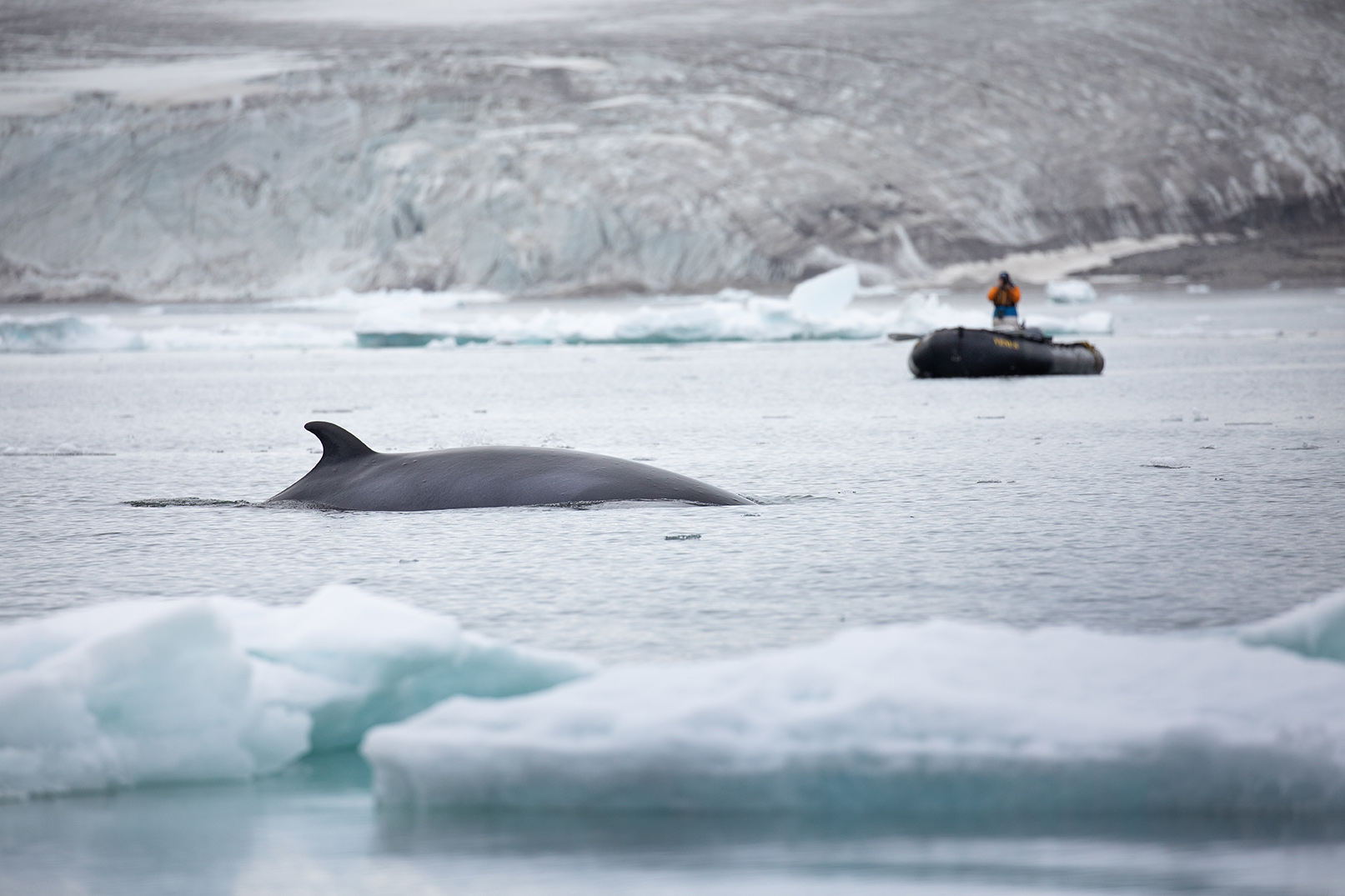
It's common to see groups of minke whales near feeding grounds in polar waters, but older minke whales are also known to live in groups, whereas young whales are much more commonly seen on their own. When in groups, minke whales communicate with one other through vocalizations, and can hear one another through special fats in their ears.
Are minke whales dangerous?
Minke whales are more curious than they are dangerous, and like dolphins they have been known to chase boats and approach divers out of innocent interest.
Minke whales often also breach just to see what's going on at the water's surface. Minke whales are thought of as gentle, curious, and intelligent marine mammals.
Book your trip today for your chance to see the incredible minke whale in person!

